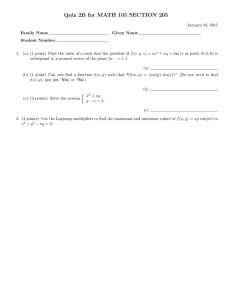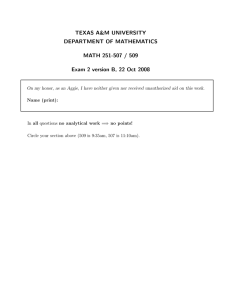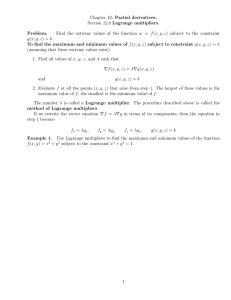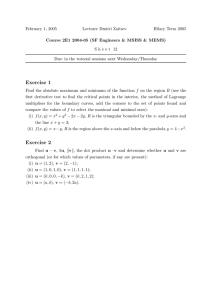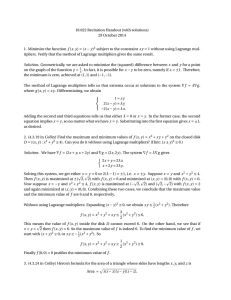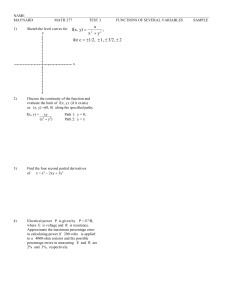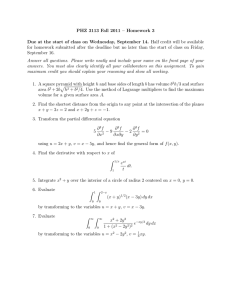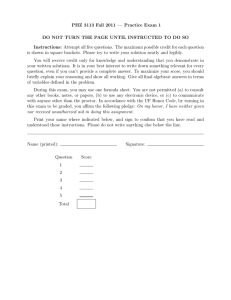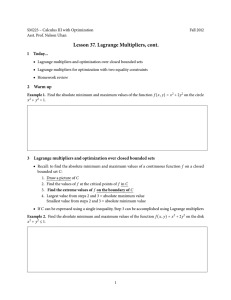Page 1 Section 12.8: Lagrange Multipliers
advertisement
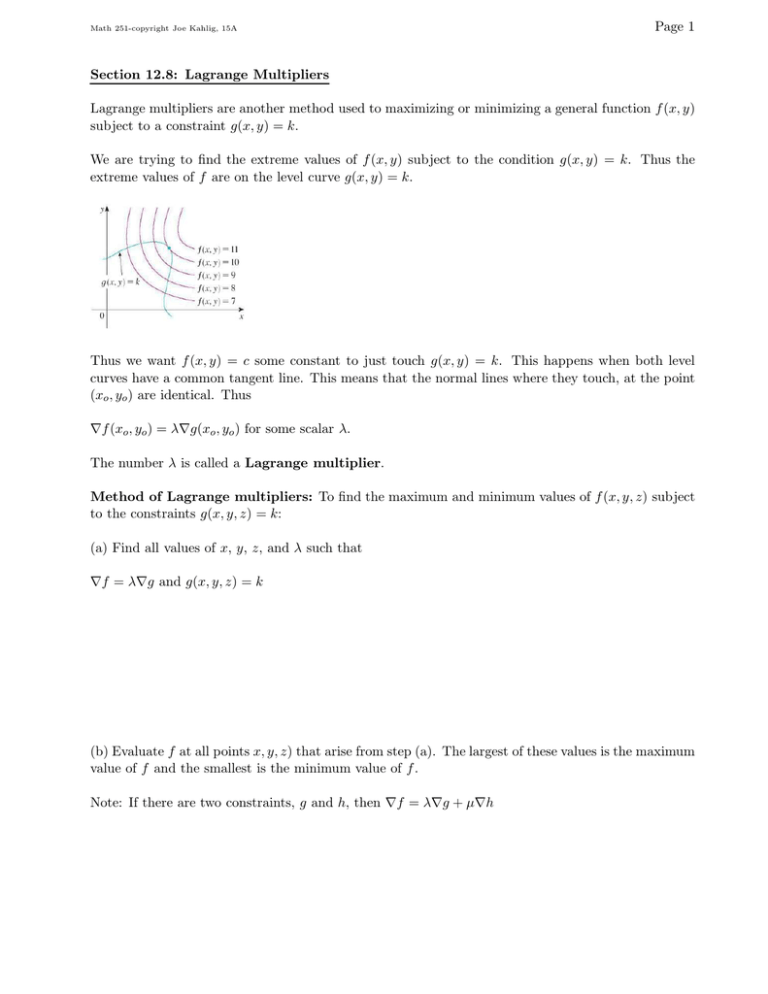
Math 251-copyright Joe Kahlig, 15A Page 1 Section 12.8: Lagrange Multipliers Lagrange multipliers are another method used to maximizing or minimizing a general function f (x, y) subject to a constraint g(x, y) = k. We are trying to find the extreme values of f (x, y) subject to the condition g(x, y) = k. Thus the extreme values of f are on the level curve g(x, y) = k. Thus we want f (x, y) = c some constant to just touch g(x, y) = k. This happens when both level curves have a common tangent line. This means that the normal lines where they touch, at the point (xo , yo ) are identical. Thus ∇f (xo , yo ) = λ∇g(xo , yo ) for some scalar λ. The number λ is called a Lagrange multiplier. Method of Lagrange multipliers: To find the maximum and minimum values of f (x, y, z) subject to the constraints g(x, y, z) = k: (a) Find all values of x, y, z, and λ such that ∇f = λ∇g and g(x, y, z) = k (b) Evaluate f at all points x, y, z) that arise from step (a). The largest of these values is the maximum value of f and the smallest is the minimum value of f . Note: If there are two constraints, g and h, then ∇f = λ∇g + µ∇h Math 251-copyright Joe Kahlig, 15A Page 2 Example: Find the extreme values of the function f (x, y) = x2 + 2y 2 on the ellipse x2 + 16y 2 = 16 Math 251-copyright Joe Kahlig, 15A Page 3 Example: Find the points on the sphere x2 + y 2 + z 2 = 25 where f (x, y, z) = x + 2y + 3z has its maximum and minimum value.

